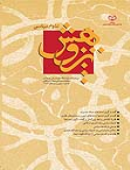گفت وگوي تمدنها: زمينههاي عيني و سرمشقهاي نظري
محورهای موضوعی : پژوهش سیاست نظری
1 -
کلید واژه: انديشههاي اجتماعگرا باختين گادامر گفت و گوي تمدنها نظريه ليبرال هابرماس,
چکیده مقاله :
در اين مقاله تلاش شده است با تمسك به تنوعات فلسفه سياسي مدرن، الگوهايي كه هر يك به نحوي مستعد پذيرش ايده گفتوگوي تمدنها هستند، طبقهبندي شوند. اين الگوها در قالب سه دسته نظريه «ليبرالي مصلحت جويانه»، «ليبرالي متكي بر پيوند اخلاقي» و «غيرليبرالي متكي بر همبستگي سياسي» قابل طرح هستند. هابرماس، گادامر، باختين و فيلسوفان اجتماعگرا نظريهپردازاني هستند كه ميتوانند ذيل اين تقسيمبنديها مورد مطالعه قرار گيرند. بخش دوم مقاله به بررسي الگوهاي پديد آمده در عرصه ارتباطات طي سه دهه پاياني قرن بيستم و توصيف مختصر ويژگيهاي هر يك اختصاص دارد. نظم پارادايمي نخست عمدتاً دربرگيرنده يك الگوي نقاد به نظم سرمايهدارانه در عرصه جهاني است، الگوي پارادايمي دوم به روايت هابرماس از ارتباط قرابت بيشتر دارد و الگوي سوم به مباني نظري اجتماعگرايان نزديك ميشود. بخش سوم مقاله در پي آن است كه به اعتبار نظريهها و سرمشقهاي مطرح شده به وجوه عمده فلسفي و سياسي كه ايده گفتوگوي تمدنها را به نظريه علمي نزديك ميكند، بپردازد. بر اين اساس ميتـوان پيوندهاي بيشتري ميان انديشههاي «اجتماعگرا» و ايده «گفتوگوي تمدنها» برقرار كرد.
The present paper is inspired by part of a research titled “Dialogue of Civilizations and International Communications: An Analysis of the Actual and Theoretical Grounds of Realizing a Dialogue among Civilizations”. In part one, a review of various modern schools of political philosophy is carried out with a view to distilling models which would be congenial to the idea of the dialogue of civilizations. These are divided into the three categories of “interest-oriented liberal”, “liberal based on an ethical relationship”, and “non-liberal based on political solidarity”. Part two is an examination of the various patterns that have emerged in the field of communications in the past thirty years, as well as a brief account of their distinctive characteristics. The first paradigmatic order mainly encompasses a model critical of the prevailing capitalist system in the world. The second paradigmatic model, as underlined by Habermas, has stronger affinities to the notion of communication. The last model is more in tune with the views of communitarians. The final part is an attempt at ascertaining the degree to which the examined theories and guidelines lend philosophical and political substance to the idea of dialogue of civilizations as a scientific theory. Based on such an approach it becomes possible to establish stronger links between communitarian notions and the idea of dialogue among civilizations.


